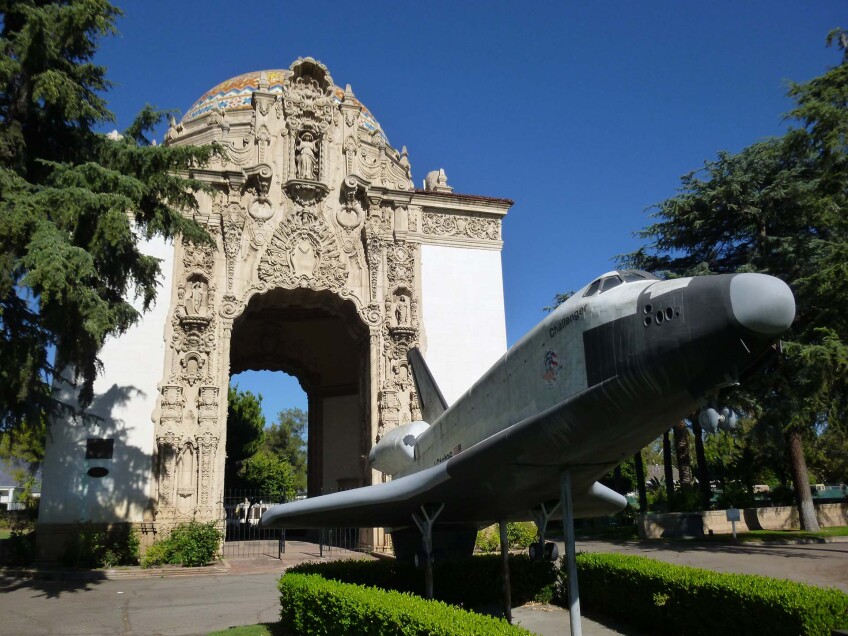Five Most Peaceful Solo Excursions in SoCal

There are times when you need to just get away from it all, unplug and spend a little quality time by yourself.
And there’s no better time to get outside, enjoy the clear skies and take a nice, deep, long breath.
In Southern California, we're lucky not to have to go very far to escape the crowds and get in some "me time."
When the beaten path is not where you want to be, here are five of the most accessible outdoor adventures you can have on your own — from dawn to dusk (weather permitting).
1. Olinda Oil Museum, Brea (Orange County)


The word "brea" means "tar" — just like the La Brea Tar Pits and La Brea Avenue, both of which seep our natural source of “black gold.” But within the City of Brea boundaries, there's another town — a forgotten one that's all but disappeared. That is, all except the Olinda Oil Museum & Trail. It marks the spot where, by 1898, ten wells had been drilled into the hillsides — putting Olinda (at least briefly) on the map.
Olinda was a boomtown in the 1920s, at its peak housing 3,000 workers and their families in 700 cottages and other dwellings — and boasting one of the wealthiest school districts in Orange County. By 1949, the Brea-Olinda oilfield ranked #18 in the country — but you'd never know by visiting the grounds of this former company town, now a ghost town, whose last residents moved out 1950s-60s with the construction of various local dams (including the nearby Carbon Canyon Dam). It's now been transformed into a 12-acre historical park, the oil operation's former lease office/headquarters (built 1912, vacated 1999) currently serving as a museum that collects artifacts and tells the story of how crude oil and water became big business — especially in powering the railroad.
Even when the museum building itself is closed, you can wander the grounds to see Edward L. Doheny’s Olinda Oil Well #1, established in 1897 at only 806 feet deep and still running — making it the oldest operating well in SoCal. Other outdoor displays include a pumping unit for shallow wells (once used by Shell Oil Company), a Jack Line oil pump unit and central jack plant, a wooden "walking beam" pump, an old Ford Model T, rigs, a steam boiler and more oil well equipment. Set off on a two-mile loop and climb 275 feet through the Puente-Chino Hills, starting and ending at the museum headquarters.
2. Arlington Garden, Pasadena (Los Angeles County)


Technically considered a botanic garden, Arlington Garden is a slice of Pasadena history as well — located on three acres of the former John Milton Durand estate. Designed by architect Frederick Roehrig, the 50-room, three-story mansion stood at the corner of “Millionaires’ Row” (Orange Grove Boulevard) and Arlington Drive from 1904 to 1964. After selling at public auction in 1961 and falling into disrepair, the estate got gobbled up by Caltrans during its expansion of the 710 Freeway and was used to store equipment.
The 17,000-square-foot, French Normandy style manse made out of Red Arizona sandstone was razed long ago, but the City of Pasadena leased the parcel from Caltrans to operate it as a new kind of city park — a water-wise native garden that’s open to people of all ages (and their pets), but without traditional “park” facilities like a playground, ball field, or public restrooms.
Instead, you’ll walk into a Mediterranean garden, with a formal allée of olive trees and a pine forest just beyond. Turn right to amble through an oak grove and meadow, and take it slow through the rock labyrinth just before you get to the compost garden. Or, you can enter the citrus grove on foot directly from South Pasadena Avenue. Either way, park on the street and take your time exploring the statuary and reading the messages on a “Wish Tree,” one of many such installations by Yoko Ono.
3. Radford Art Walk, Studio City (Los Angeles County)


Located along the east side of Radford Avenue just outside the CBS Studio Center gate — and just a stone’s throw from the Los Angeles River Bike Path and the Valleyheart Greenway — you’ll find a series of sculptures by Studio City’s own assemblage artist Karl Johnson (1945-2015). Installed in 2012 as part of a collaboration with the Studio City Beautification Association, they’re part of the Radford Art Walk, which extends for just 0.25 miles. But each of the 15 sculptures made of reclaimed materials is so intriguing; you can spend plenty of time exploring them, as well as the surrounding landscaping.
You’ll probably first spot the retaining wall made of local rocks and, thrillingly, a surplus of old studio lights from the CBS Studio Center soundstages. Then, beyond the somewhat overgrown California natives and other Mediterranean plantings, there are the mixed-media sculptures hiding in plain sight — first the “Welcoming Lamp” to light the way, then “Ticking Clock” (representing the relentless tug of war with time), “Door to Enlightenment” (representing ignorance as a prison), etc.
These “resurrected” art pieces — all fabricated out of recycled and salvaged stone, welded steel, mosaic, wood, and more — are open for viewing 24/7, rain or shine. And because they’re situated near where Radford Avenue ends at the Tujunga Wash (a tributary of the L.A. River), you won’t find much traffic whizzing by. Explore them solo, or share their beauty with a pup on a leash.
4. Pierce Brothers Valhalla/Portal of the Folded Wings, North Hollywood (Los Angeles County)


One of the original cemeteries in the San Fernando Valley was founded in 1923 as “Valhalla Memorial Park,” sometimes called “Valhalla Mausoleum Park,” and now known as Pierce Brothers Valhalla Memorial Park and Mortuary. Established on a 65-acre ranch by John R. Osborne and C. C. Fitzpatrick of the Osborne-Fitzpatrick Finance Company, its ownership was taken over in the 1950s by family-owned Pierce Brothers, now part of the national Dignity Memorial network.
There’s plenty to explore through this park-like setting — and not just the celebrity gravesites (like that of Oliver Hardy). Stroll through the George Washington Memorial Garden and Abraham Lincoln Memorial Garden, which encircle a lovely fountain with an angel on top (circa 1925). And at the former east entrance, find the Valhalla Memorial Rotunda, once used as a drive-thru entryway — and later, for concerts, KELW radio broadcasts, and other public events. But in 1937, a 20-year movement began to convert its use in honor of its aerospace neighbors, Burbank Airport and Lockheed Aircraft. It was formally dedicated as the “The Portal of the Folded Wings Shrine to Aviation” on the 50th anniversary of the birth of powered flight, December 17, 1953.
Now, the 75-foot tall Churrigueresque/Spanish Colonial Revival monolith contains the cremated remains of several pioneers of flight — including stunt pilots, balloonists, an aerial acrobat in a flying circus (Hilder F. Smith), the second female pilot to be licensed in the U.S. (Matilde Moisant), and the Wright Brothers' mechanic (Charles Taylor). But this national landmark, designed by architect Kenneth MacDonald, Jr. and sculptor Federico Giorgi, isn’t just a burial site. It’s also a kind of marble memorial to the advancement of the “Air Age” — which gave way to the "Jet Age" and ultimately the "Space Age." Outside the Portal, you'll find a scaled-down space shuttle model, added in 2007 to commemorate the lost crews of the Challenger and Columbia missions.
5. Conejo Valley Botanic Garden, Thousand Oaks (Ventura County)



Want to get panoramic views of the Conejo Valley from the highest point in the city of Thousand Oaks? There’s just one place to do that — Conejo Valley Botanic Garden, whose 33 acres of natural terrain is one of the best-kept secrets of Ventura County. While a significant percentage of that acreage provides a natural habitat for birds and small animals (like rabbits, the namesake of the Conejo Valley) – accessible via the 3/4-mile-long Nature Trail — a developed area of the garden that highlights water-conserving plants in specialty gardens highlighting Australia, California, and other Mediterranean climates.
Among the California natives, you’ll find some plants that have been growing in the area since long before any people arrived, like palo verde trees and toyon. Two types of native oak trees occur naturally throughout the garden — the coast live oak (Quercus agrifolia) and the valley oak (Quercus lobata), one of which is at least 300 to 400 years old. Fortunately, SoCal’s climate also allows us to grow a vast variety of fruits — including some rare ones you’ll find in an orchard installed by the California Rare Fruit Growers. A total of 130 fruit trees from 35 different temperate, sub-tropical, and tropical countries around the world can be found in The Rare Fruit Orchard.
All of these and more — including the Butterfly Garden, Herb Garden, and Japanese-style Tranquility Garden — are maintained entirely by volunteers of the garden, which operates as a non-profit organization. Admission to this lovely retreat is free, but paid memberships help support their efforts and get you access to several other gardens across the country (as part of the American Horticulture Society reciprocation program). The garden is open from sunrise to sunset daily, with an adjacent Kids' Adventure Garden open Sundays only from 11 a.m. to 3 p.m. Certain weather conditions (like rain, muddy trails, high winds) will close the garden until further notice, so keep an eye on its website and Facebook page for the latest.
Editor's note: Given closures announced during these trying times, please check to see whether these locations are still open to the public.
Top Image: A butterfly at the Conejo Valley Botanic Garden | Sandi Hemmerlein










